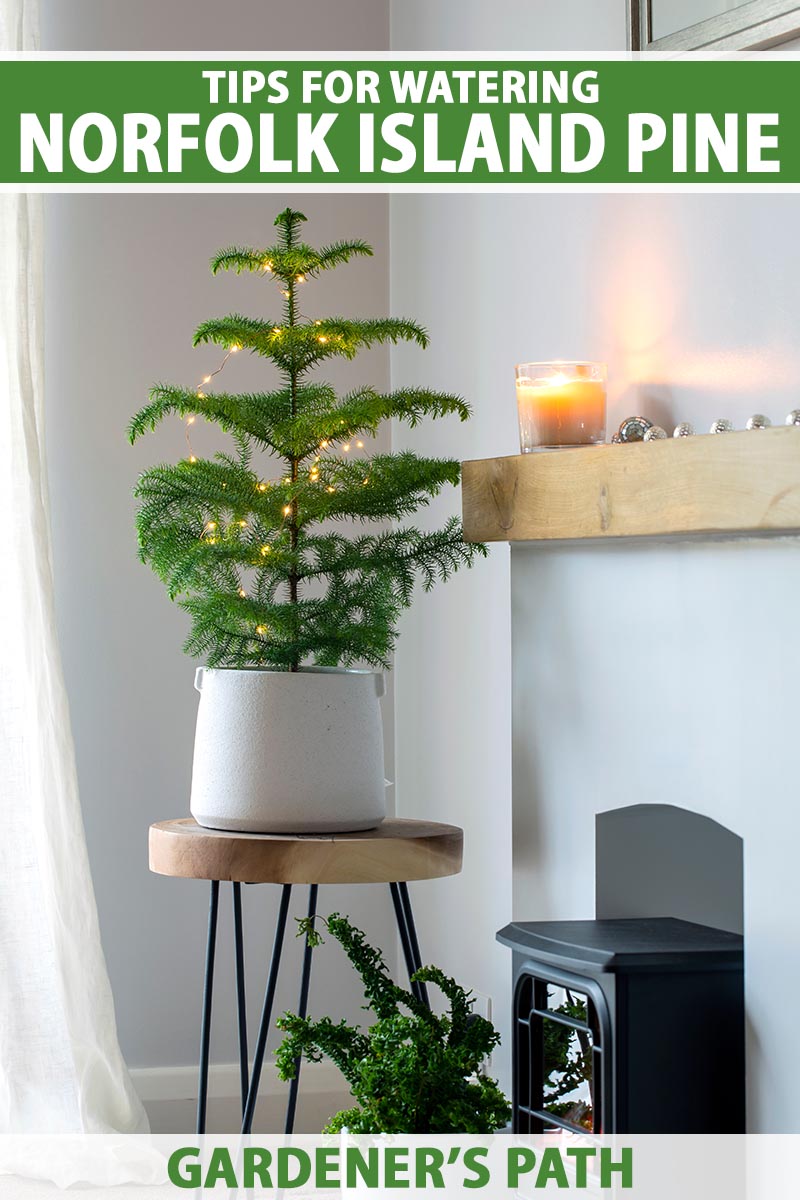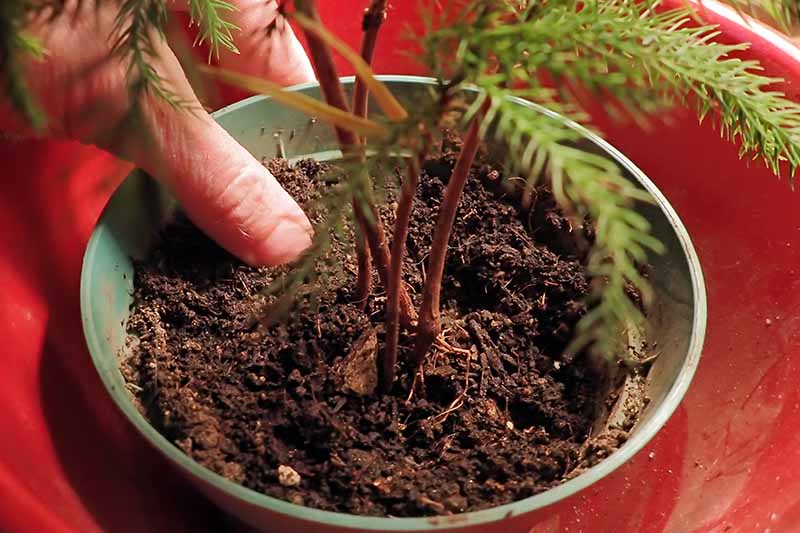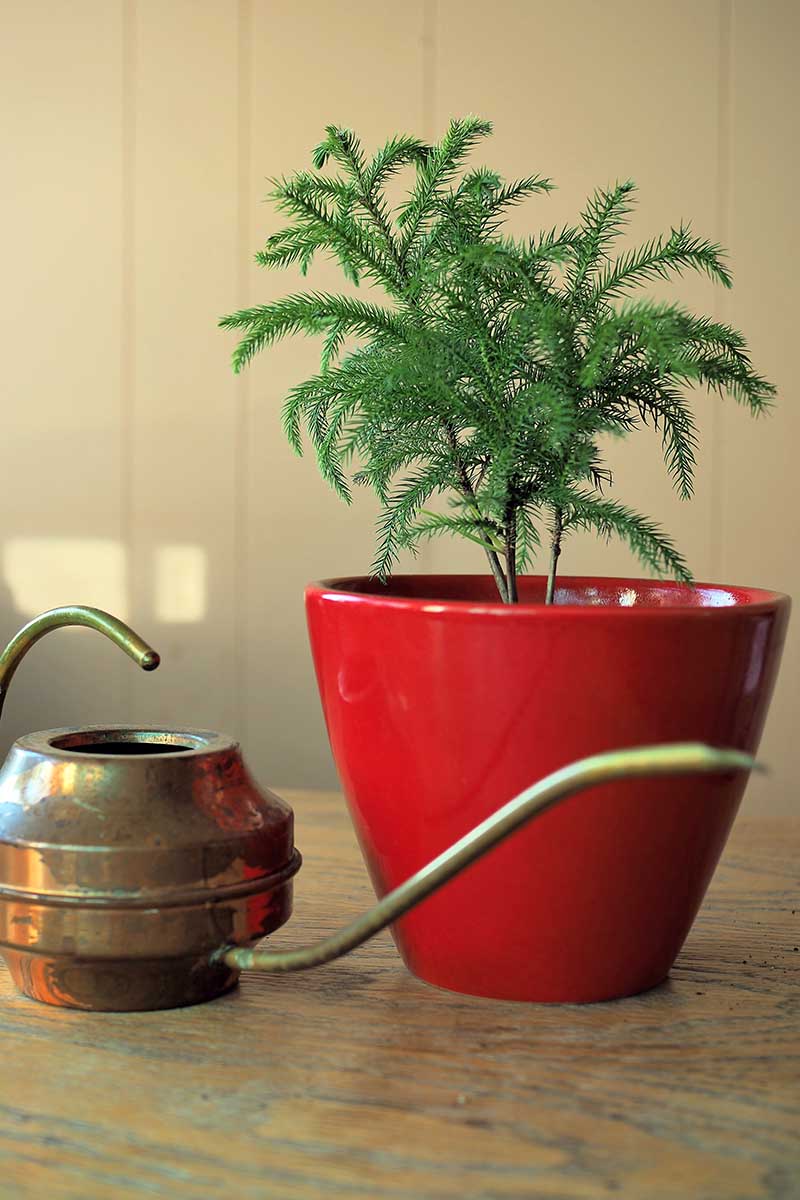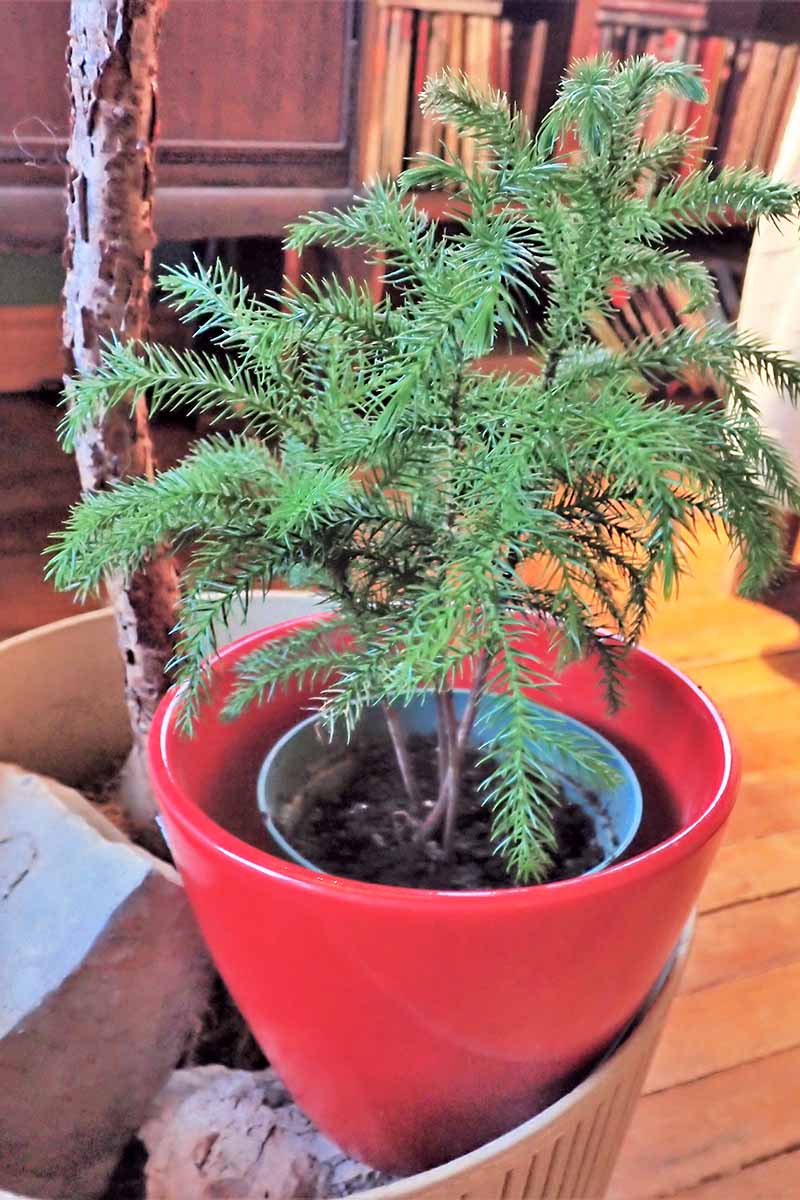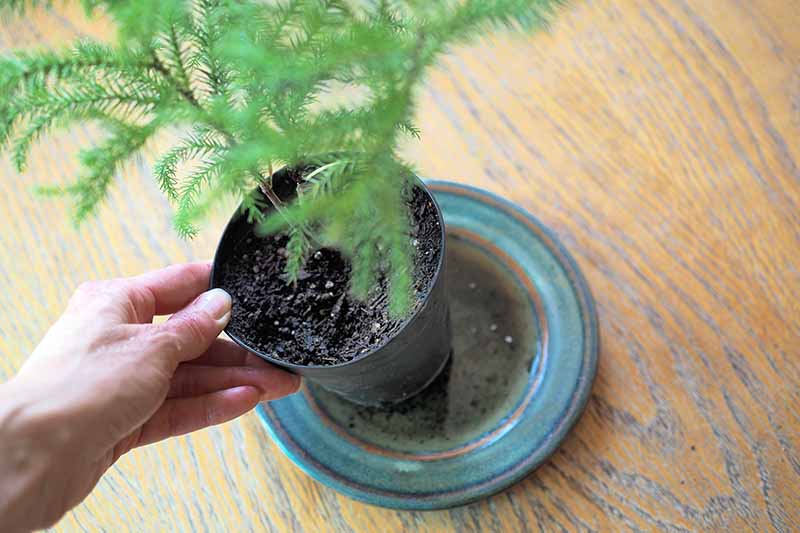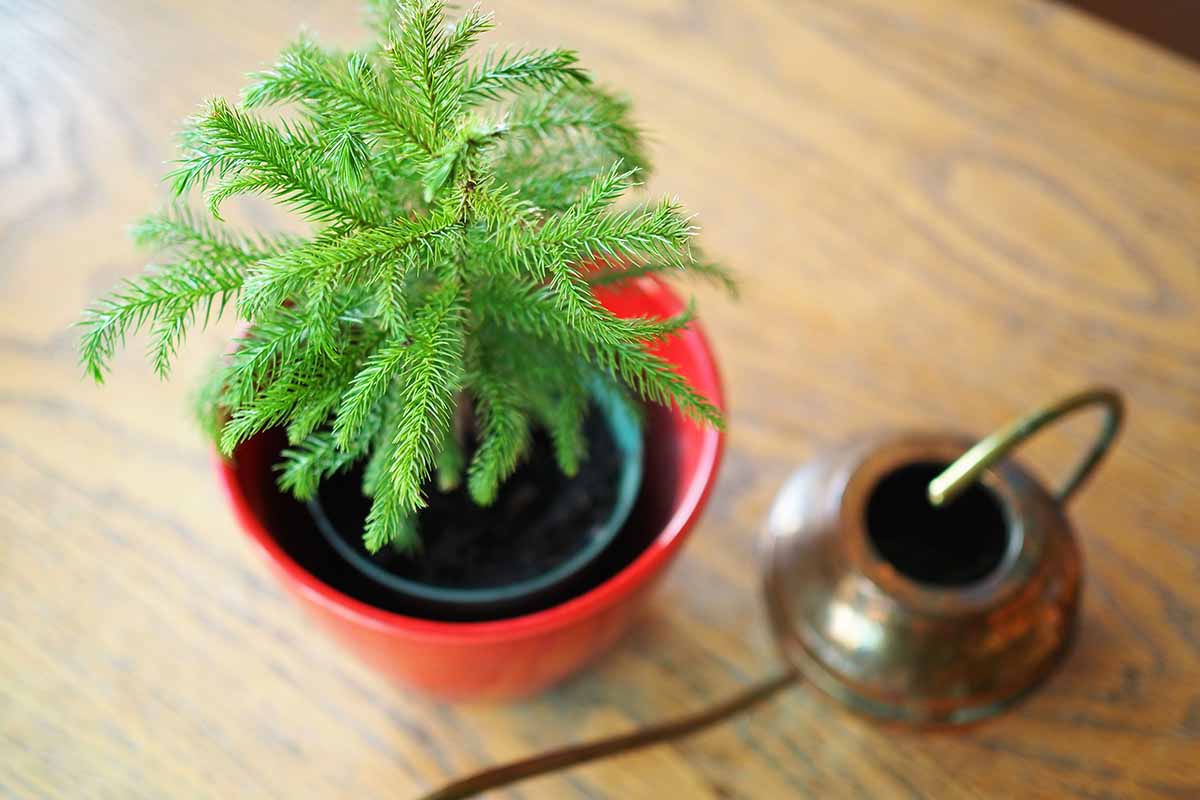But don’t wait until after the festivities are over to begin a good watering routine for your conifer – you’ll want to start right away! Keeping your living Christmas tree properly hydrated isn’t hard, but you’ll need to be aware of this coniferous plant’s moisture requirements to keep it at its happiest. We link to vendors to help you find relevant products. If you buy from one of our links, we may earn a commission. In this article, you’ll learn all you need to know about how to water your living Christmas tree. Here’s what we’re going to cover:
When to Water
First let’s go back, way back, all the way to this evergreen houseplant’s native climate. In the wild, Norfolk Island pine trees grow in coastal areas of the South Pacific where they get plenty of moisture, and sink their roots into sandy seaside soils. Translating those needs into indoor terms, your evergreen will prefer soil that is moist and well-draining – but never soggy. A good rule of thumb to use when these conifers are grown as houseplants is to give them a drink when the top inch of the soil feels dry. And it’s a good rule of thumb in more ways than one – because you can use one of your digits to determine this! Alternatively you can use a moisture meter. Check out our guide to learn how to use this handy tool. Now you know to give your plant a drink when the top inch of the soil is dry. But how do you determine how often that will be, exactly? Many different factors will influence how quickly your houseplant dries out between drinks, including the type of potting medium, the type of pot it’s growing in, the size of the plant, and the climate in your home. Here’s what I mean by that. Specimens in terra cotta pots will dry out faster than those in plastic, those kept in brighter light will lose moisture faster than those in lower light, those in dry indoor air will get thirsty more quickly than those in humid air, and of course, plants kept at higher temperatures will need to be given a soak more often than those at lower temperatures. In addition to all of these variables, younger trees will need to be given a drink more frequently than more mature ones. When you’re trying to figure out how often you’ll need to give your houseplant a soak, pull out your gardening journal and note the date you watered your new plant. Then check the plant again in a week. If the top inch of soil feels dry, go ahead and give your conifer a soak. If more than the top inch of soil feels dry, and the conifer seems to be drying out very quickly after watering, you will probably need to hydrate it more frequently – and you might want to consider repotting your living Christmas tree. If you’re not sure whether the top inch of soil is completely dry or not, wait a few more days – err on the side of less rather than more. Once you keep track of your watering in your gardening journal over a month or so, you should notice a pattern and be able to develop a regular routine. You’ll also want to adjust your routine to provide slightly less hydration during the winter months. If summertime has you drenching your conifer once a week, winter might see you giving it a drink every 10 days to two weeks. But rather than sticking to a fixed schedule, be sure to check your houseplant’s growing medium to make sure you aren’t under- or overwatering.
How to Water
When it’s time to give your evergreen a drink, soak the soil evenly until liquid runs out of the drainage holes in the bottom of the pot. Some indoor gardeners prefer the bottom watering method, so you might want to try out both techniques and see which you prefer. After you give your tree a drink, make sure that it’s not sitting in soggy soil. You’ll want to make sure your pot has adequate drainage holes, and that you drain any liquid remaining in the plant’s saucer after its soak. If your specimen is quite large and its container quite heavy, you may need a helper for this maneuver – one pair of hands to lift the pot, and another pair to remove and empty the saucer. In addition to hydrating your houseplant on a regular basis, your conifer will stay healthiest if you take care with the type of water you provide it. Like other houseplants such as orchids, hoyas, prayer plants, and spider plants, Norfolk Island pines can react badly to fluoride and other unwanted chemical compounds in municipal tap water. To avoid problems caused by fluoride and chemical residues, consider providing your tree with rainwater, or filtered or distilled water to keep it happy and healthy. Are you growing a Norfolk Island pine tree in your home? Have you got any tips to share? Let us know in the comments section below. And if you’re looking for some holiday-themed houseplant companions for your living Christmas tree, here’s a bit more reading to give you some ideas:
How to Propagate Norfolk Island PineHow to Grow Christmas Carol Aloe: Anti-Sting and Makes You Sing!How to Grow and Care for Christmas Cactus
